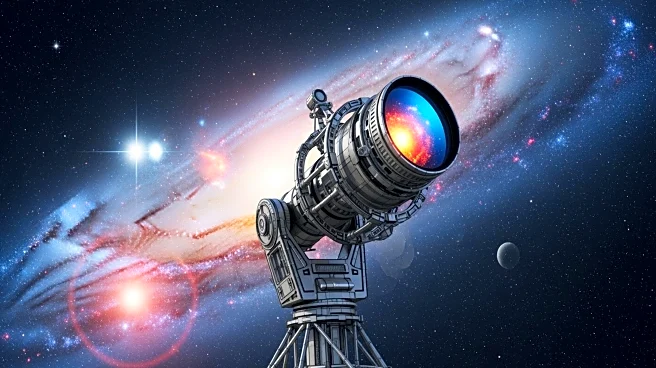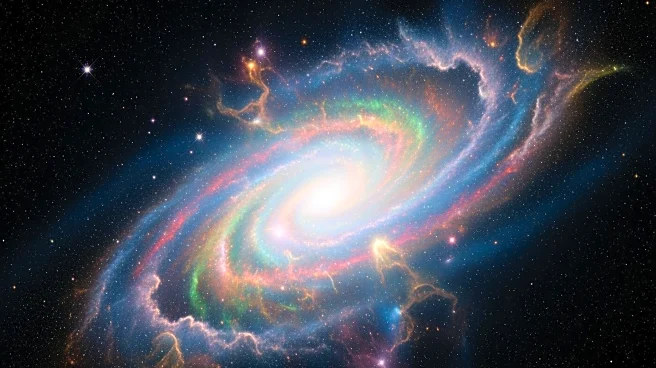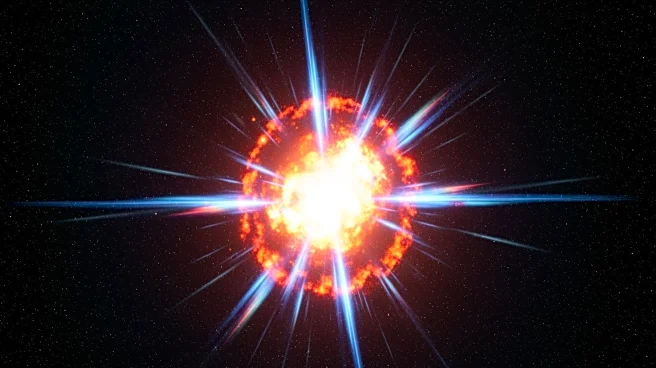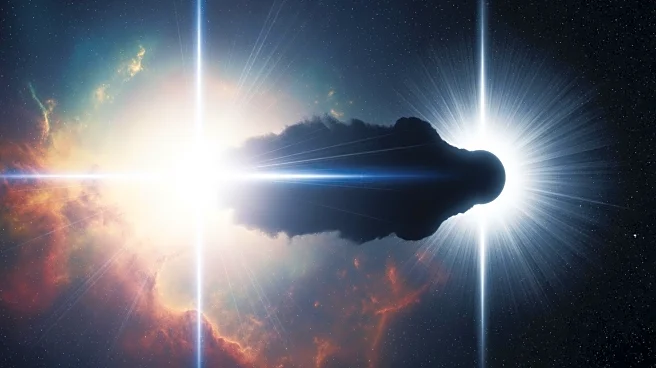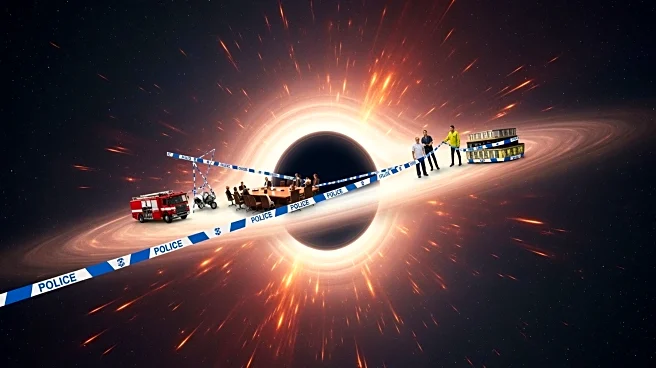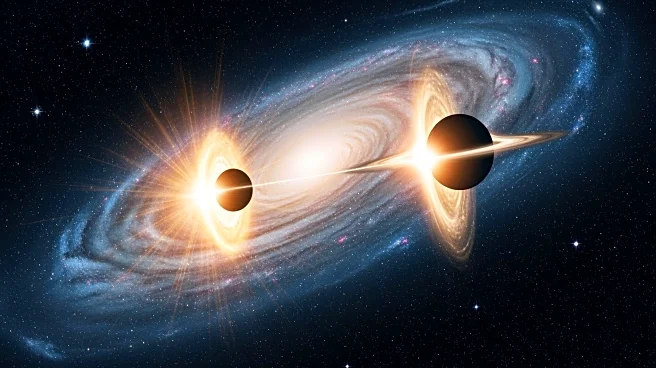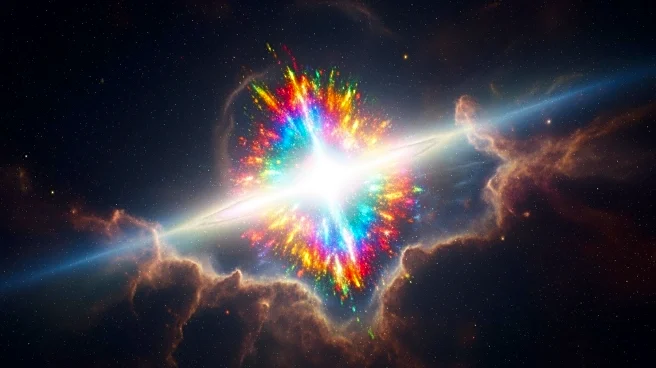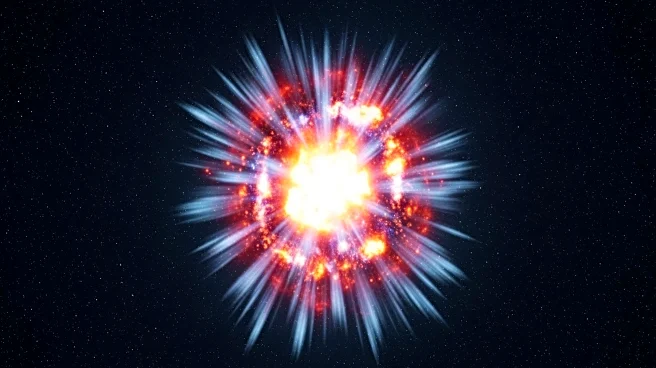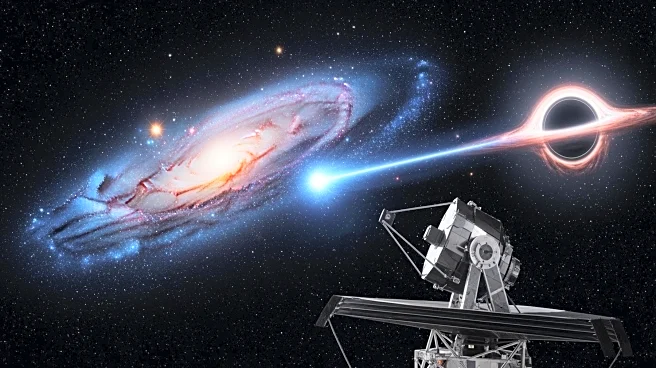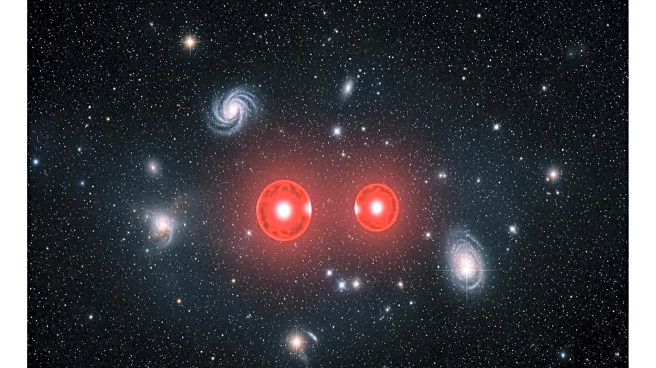What's Happening?
Astronomers have confirmed that GRB 250702B is the most energetic gamma-ray burst ever recorded. Detected by NASA's Fermi telescope on July 2, 2025, this event lasted a full day, unlike typical gamma-ray bursts
that last only a few milliseconds to several minutes. The James Webb Space Telescope was used to determine the distance of the burst, which helped calculate its energy, confirming its unprecedented power. The event challenges existing models of gamma-ray bursts, as it did not result in a visible supernova, which is usually expected. The host galaxy's large and dusty nature adds to the mystery, suggesting that the environment may have played a role in the burst's unique characteristics.
Why It's Important?
The confirmation of GRB 250702B as the most energetic cosmic explosion has significant implications for our understanding of gamma-ray bursts and the life cycles of stars. This discovery challenges existing models and suggests that there may be unknown processes at play in the universe. The findings could lead to new theories about the formation and behavior of black holes and the environments that produce such powerful cosmic events. This research not only advances scientific knowledge but also highlights the capabilities of modern telescopes like the James Webb Space Telescope in exploring the universe's most extreme phenomena.
What's Next?
Further investigations are needed to understand the causes of GRB 250702B. Astronomers will continue to search for a hidden supernova and monitor the burst's afterglow. New models may be developed to explain this rare event, and additional observations could provide more insights into the role of the host galaxy's environment. The scientific community will likely focus on refining gamma-ray burst models and exploring the implications of such energetic events on cosmic evolution.
